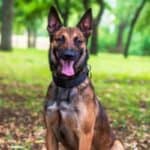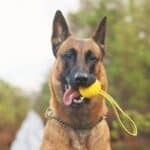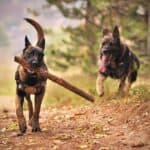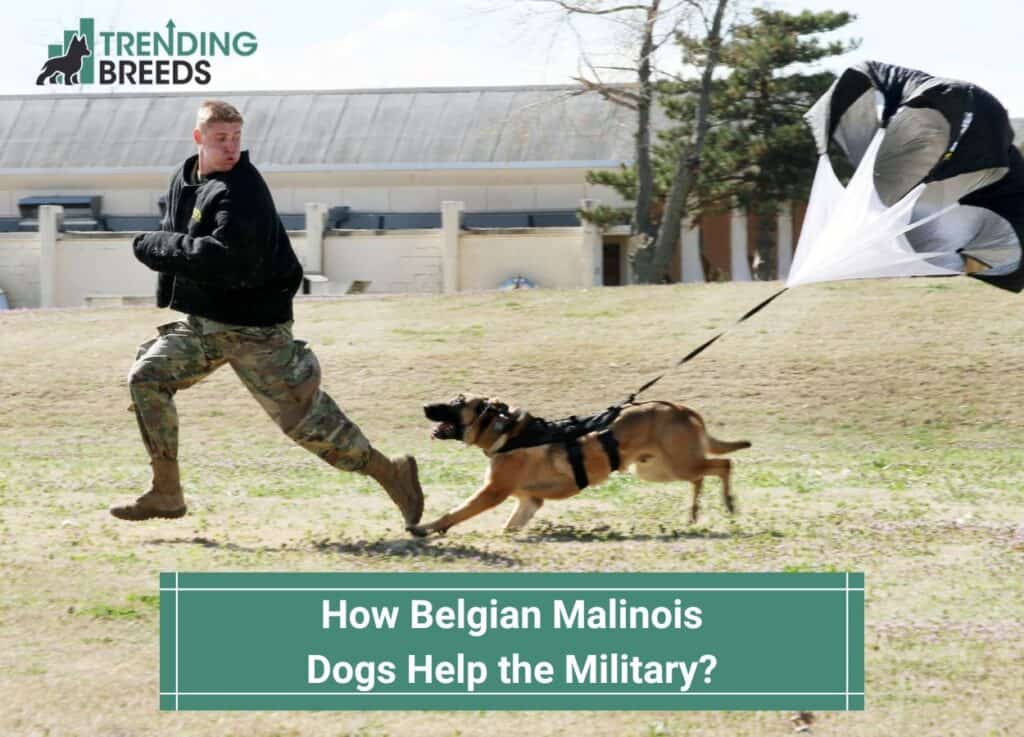
Today we are going to talk about How Belgian Malinois Dogs Help the Military? Lean, athletic, and muscular, the Belgian Malinois is known for its intelligence, agility, high levels of energy, and intensity.
Although this breed was originally bred for herding, its versatility and ease of training allowed it to be trained for various other purposes, particularly as military dogs.
Territorial and protective dogs employed by the military receive training at an early age for difficult and often dangerous tasks.
Like their human handlers, these super dogs are frequently outfitted with bullet and knife-proof vests, night vision cameras, GPS trackers, and Doggles (dog goggles).
The Belgian Malinois is the most widely used breed by the SEAL Teams.
Also called the Belgian Shepherd, the Malinois has a leaner and lighter body than the German Shepherd which makes them more suitable for tandem rappelling or tandem parachute jumping, both an intrinsic part of many SEAL missions.
The incredible breed can run at a speed of 30 mph and has a bite force of 200 pounds of pressure per square inch. It has a 270-degree range of vision, can resist the desert’s heat, and can also withstand cold weather.
In this blog post, we’ll look at the various duties that the Belgian Malinois has in the military and learn more about the impressive role of military dogs.
Other articles you would like: Are Belgian Malinois Hypoallergenic? and Should I Get A Male Or Female Belgian Malinois?
Table of Contents
Detecting Improvised Explosive Devices (IEDs)
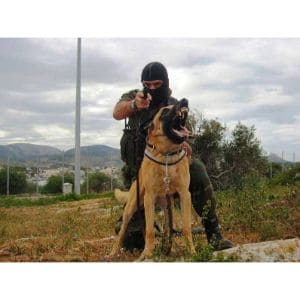
A dog’s formidable sense of smell is key in sniffing bombs on and off wires. IEDs, or improvised explosive devices, are a type of bomb that can be made using easily accessible materials.
IEDs have been used by terrorist groups around the world to target civilians and military personnel. While they can vary greatly in size and complexity, IEDs typically consists of an explosive charge, a detonator, and a power source.
IEDs can be detonated manually or remotely, making them incredibly difficult to detect and disarm. In recent years, there has been an increase in the use of IEDs in asymmetric warfare.
As militaries have become better at protecting their troops from traditional explosives, terrorist groups have turned to IEDs as a way to level the playing field. IEDs are extremely dangerous and have claimed the lives of thousands of innocent people.
Early detection of these weapons can reduce the potential for explosion victims and increase mission effectiveness, and there is no better job for a dog’s nose.
The Belgian Malinois is capable of detecting explosives placed on multiple vehicles. It is one of the tests of their ability to detect explosives in the training ground.
In addition, distractors for their sense of smell were placed around the site to add complexity to the test, such as sausage and bacon.
On a test like this, the Belgian Malinois can find explosives on average in about two minutes. They can up and down detect and locate explosives outside the vehicle, even alerting the handler if something is wrong.
Search and Rescue for Survivors
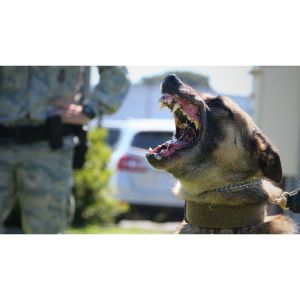
Another job for a dog’s remarkable nose, the Belgian Malinois has one of the keenest noses, even among other working breeds. Every human continuously emits microscopic particles from his body when in motion.
These particles have a unique odor that differs from person to person, and when carried by the wind, they usually settle near the ground, and dogs can pick up the smell.
The Belgian Malinois’ sense of smell can be used to find survivors in a natural disaster or military attack. Belgian Malinois are trained to detect victims under rubble, cramped spaces, tunnels, mines, and other difficult locations.
Their agility and athleticism make them perfect for weaving through rubble and challenging terrain.
They can pass through these zones faster than humans and find possible survivors quicker, alerting their handlers when they find someone.
Drug Detection
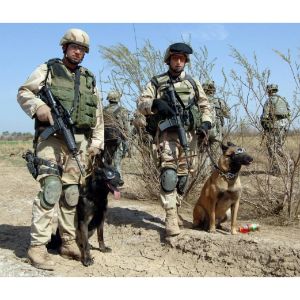
Drug sniffing dogs are trained to find various illegal substances such as cocaine, meth, and opioids. They can be deployed in any location like buildings, open areas, or country borders.
With an extraordinary sense of smell, military dogs are only trained to find explosives or drugs, but never both at the same time, as each dog specializes in their own field.
The training program is similar to explosives detection training, where substances are placed in hidden places where there are many other distractors, for example, in the kitchen, which has a lot of interesting smells for dogs.
Human Remains Detection
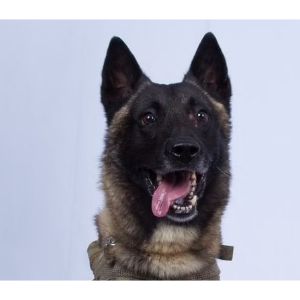
Human-remains detection dogs, also known as cadaver dogs, are trained and used to detect odors from decomposing human remains. They are used both for search on land and at sea to help victims of a disaster, crime, accident, or suicide.
Finding bodies in areas hit by natural disasters can be challenging, but a Belgian Malinois is perfect for navigating tricky terrain.
Training a cadaver dog can be tricky, as when they are successful in their job, they are usually met with sadness and disappointment, which can be confusing to them.
When they successfully find a cadaver, their handler has to maintain their composure and stay positive to praise them and reward them.
Catching The Enemies
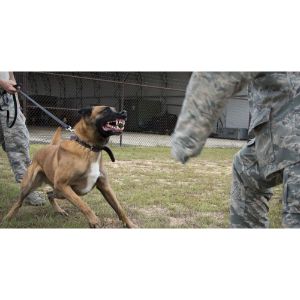
Military war dogs are trained to attack, restrain, and subdue their adversaries. They were never trained or given orders to kill, but are taught to lock onto the enemy’s legs or arms to prevent them from escaping.
Because of its natural aggression and athleticism, the Belgian Malinois is one of the top breeds for doing so.
Training attack dogs for the military is an ancient practice that goes back many years. The difference was that in the past, military dogs only knew how to attack and kill, and are generally vicious dogs.
However, in modern times, attack dogs are taught to be defensive and only attack when threatened and given a specific task or target.
Attack dogs often have to make their own decisions and their training is extensive and highly advanced. The U.S. Special Operations forces usually employ military dogs in raids to pursue and detain fugitives or suspects.
Dogs involved in raid operations must be well trained in aggression and control. They must be able to attack, command, defend, and protect handlers without orders.
Working With Navy SEALS
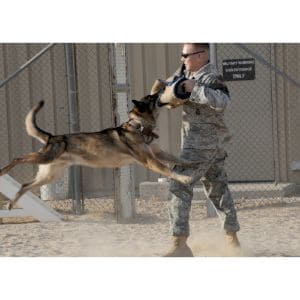
The Belgian Malinois is considered better for the tandem parachute jumping and rappelling operations often undertaken by SEAL teams. Navy SEAL dogs are highly skilled and trained and undergo special military operations in Sea, Air, and Land (SEAL).
One of the Navy SEAL dogs forever etched in history named Cairo helped the SEAL team in its operation to hunt down Osama bin Laden in 2011.
Navy SEAL dogs are equipped with video cameras on their bodies and will enter the danger zone before their handlers to detect potential dangers.
One of the other main tasks of military dogs is guarding important and secret locations.
During the cold war, they were assigned to guard nuclear weapons as well as trained to be scout dogs. Their main function is to search for enemies, store ammunition, and ambush, as well as warn their handlers when danger is present.
The role of the scout is also to alert the army and reduce the potential for sudden enemy attacks. Military dogs can even be trained to detect enemies hiding underwater!
Heroic Belgian Malinois in History
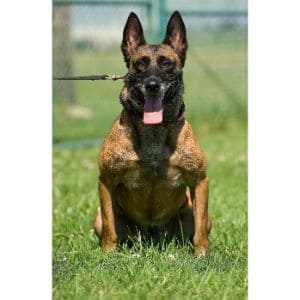
Belgian Malinois first served in the military during World War I. They were Red Cross assistants and messengers at the time. They are also responsible for pulling carts containing firearms and supplies, as well as ambulance carts.
They are also often used to search for wounded soldiers, seeking medical assistance by barking. In addition, they also dragged the injured to a safe location to save themselves.
During the US military operations in Syria in 2019, the Belgian Malinois was used extensively as military dogs to search tunnels for the most wanted terrorists.
Diva
Diva, the Belgian Malinois, became a hero in the earthquake with a magnitude of 7.1 in Mexico City and the landslide in Montecito. He served as a search and rescue dog and saved many lives.
Kuno
Kuno attacked a gunman to save the lives of British soldiers battling Al-Qaeda in Afghanistan.
The British were getting bombarded with machine guns and grenade fire and were trapped. Kuno was dispatched with night vision goggles to take out the gunman, which he did.
In that attempt, he was shot in both hind legs. Kuno lost one of his paws and became the first military dog in the U.K. to receive custom-made prosthetics. He was later awarded the equivalent of the Victoria Cross.
Layka
Layka served with the Army Rangers. Her main task is to clean up buildings left by the enemy or destroyed by bombs. In 2012 during an operation, Layka found an enemy fighter and attacked him.
She was shot four times, but survived and recovered from her injuries. She had lost a leg and retired that same year, receiving an award from the 341st Training Squadron. She was also recognized as a hero dog by the American Humane Society in 2016.
Recruitment and Training A Military Belgian Malinois
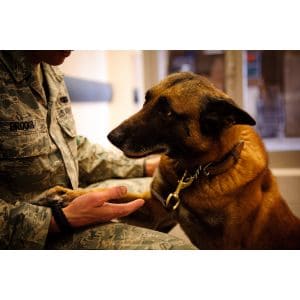
Not all Belgian Malinois will pass the rigorous training as military dogs. They have to undergo various advanced training and pass various exams to become certified.
Training the Malinois to become a military dog starts at a very young age. In addition, dogs must also be obtained from certain responsible breeders that specialize in working Malinois.
The U.S. Department of Defense, for example, only gets canine recruits from elite breeders around the world. About 13% were born and bred in the U.S. military through the DOD Military Working Dog Breeding Program, which only breeds Belgian Malinois.
Breeders and caregivers began exposing these Malinois puppies to various stimuli while their mothers were still nursing them to get a sense of their personalities.
They look for sociability, not being too aggressive or afraid of noises, curiosity, and a desire to play with objects as promising traits for future military service.
Puppies are placed with foster families for about six months when they are six to eight weeks old. The aim is to provide the pups with extensive socialization yet start their training to strengthen their natural hunting instincts and adaptability to various situations.
Puppies began their intensive training phase on military bases after leaving their foster families, where they will practice obedience and bite work.
Trainers teach them to detect odors and respond to them with specific behaviors such as sitting down and letting go of objects when ordered.
Puppies are also prepared for situations and environments they may encounter on an installation or in a battle zone.
Finally, at the age of one, they will be evaluated for entry into the Military Working Dog Training Program and made to pass various tests.
Only about 50% of military dogs make it through training, and not all of them will pass the tests.
What Makes A Good Military Dog?
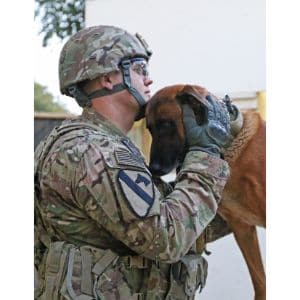
Military dogs have been used in warfare for centuries, and they continue to play an important role in the modern day. But what makes a good military dog? First and foremost, a military dog must be intelligent and trainable.
They need to be able to understand and respond to commands quickly and accurately. Additionally, military dogs must be physically strong and agile. They need to be able to run long distances, jump over obstacles, and safely navigate rough terrain.
Finally, military dogs must be disciplined and obedient. They need to be able to remain calm in stressful situations and resist the temptation to run away or attack when they’re scared.
All of these qualities are essential for a successful military dog, and this is exactly what a working Belgian Malinois is.
Conclusion For “How Belgian Malinois Dogs Help the Military”
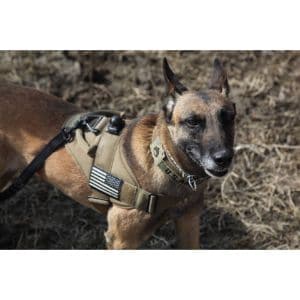
Military canines have a long history, especially in Europe and the United States. They are always used in war. But they are only starting to get the recognition they deserve for their important role in World War II.
Either way, they are as heroic as any of the human soldiers that protect us and are a vital part of the military way of life.
You will also like:
For more information about the Belgian Malinois Participation, check out the video below:


